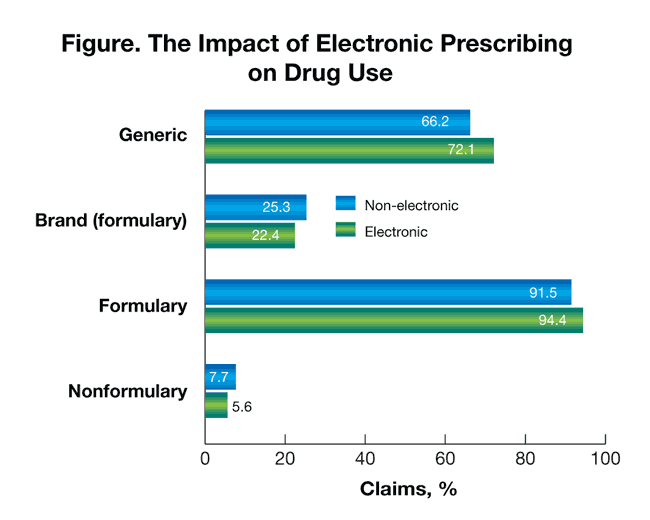- Clinical Technology
- Adult Immunization
- Hepatology
- Pediatric Immunization
- Screening
- Psychiatry
- Allergy
- Women's Health
- Cardiology
- Pediatrics
- Dermatology
- Endocrinology
- Pain Management
- Gastroenterology
- Infectious Disease
- Obesity Medicine
- Rheumatology
- Nephrology
- Neurology
- Pulmonology
Electronic Prescribing Increases Generic and Formulary Drug Use
Electronic prescribing resulted in greater generic and formulary drug use, according to Crystal Chang, PharmD, and colleagues at Blue Shield of California, San Francisco. It also led to an average cost savings of 17.3% for both the member and the payer.
Electronic prescribing resulted in greater generic and formulary drug use, according to Crystal Chang, PharmD, and colleagues at Blue Shield of California, San Francisco.1 It also led to an average cost savings of 17.3% for both the member and the payer.
The authors undertook this study to determine the impact of electronic prescribing on generic, formulary, and nonformulary drug use as well as on prescription costs and medication adherence. In this retrospective analysis, the authors examined drug claims within the Blue Shield of California system for about 1 year, from October 2008 through 2009, and included 21,867 members. Medication adherence was determined through prescription

claims for the treatment of hypertension, heart failure, diabetes, hyperlipidemia, and asthma.
Results showed that generic drug use was 5.9% higher for those whose prescription was submitted electronically. Formulary drug use increased by 3% (Figure). “Implementing electronic prescribing will likely benefit members, health plans, and providers,” concluded Chang.
References:
Reference
1. Chang C, Nguyen N, Smith A, Huynh D. Impact of electronic prescribing on outpatient prescription drug use and adherence in a network-model health plan. Presented at: Academy of Managed Care Pharmacy 22nd Annual Meeting and Showcase; April 9-10, 2010; San Diego.
